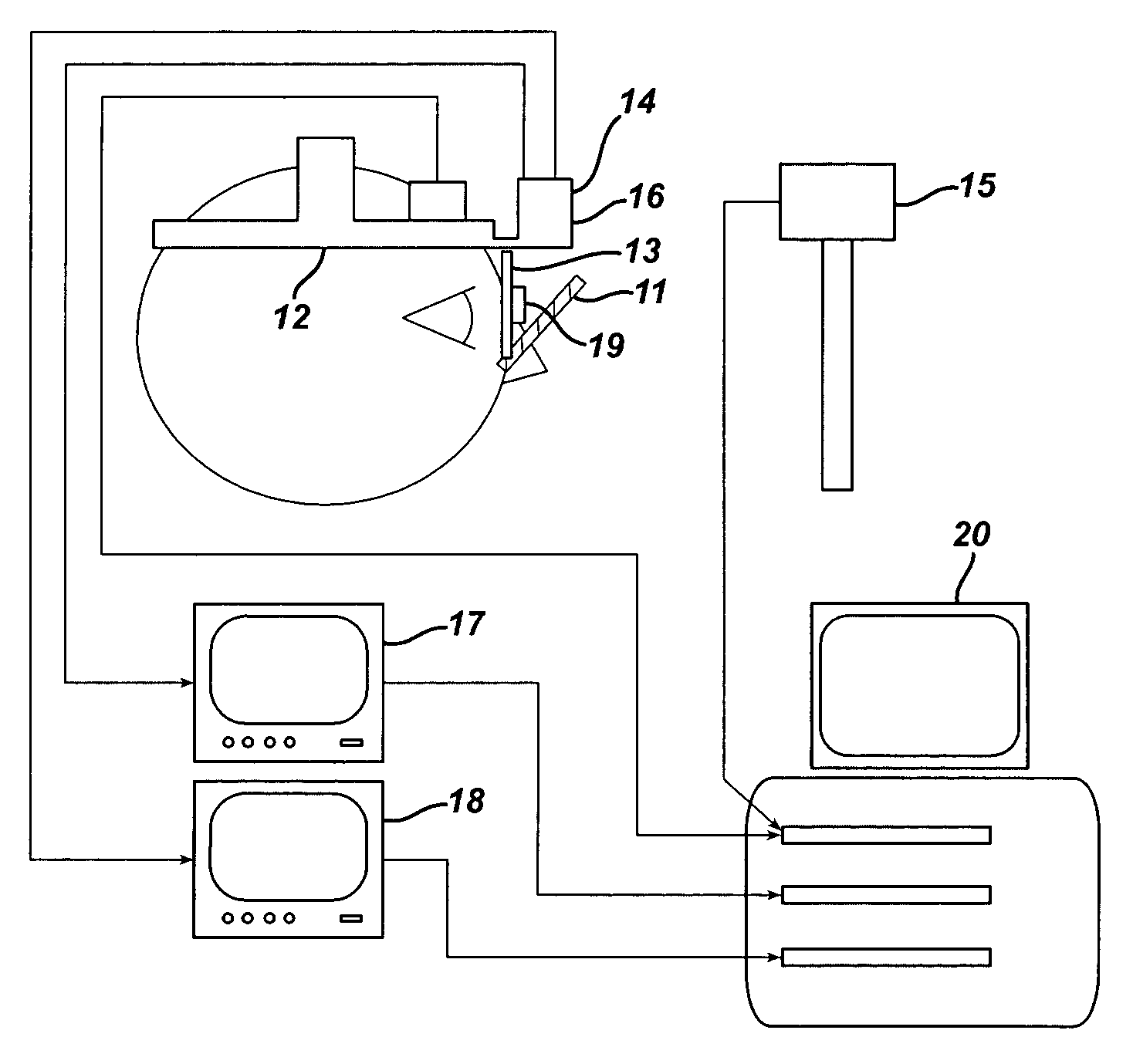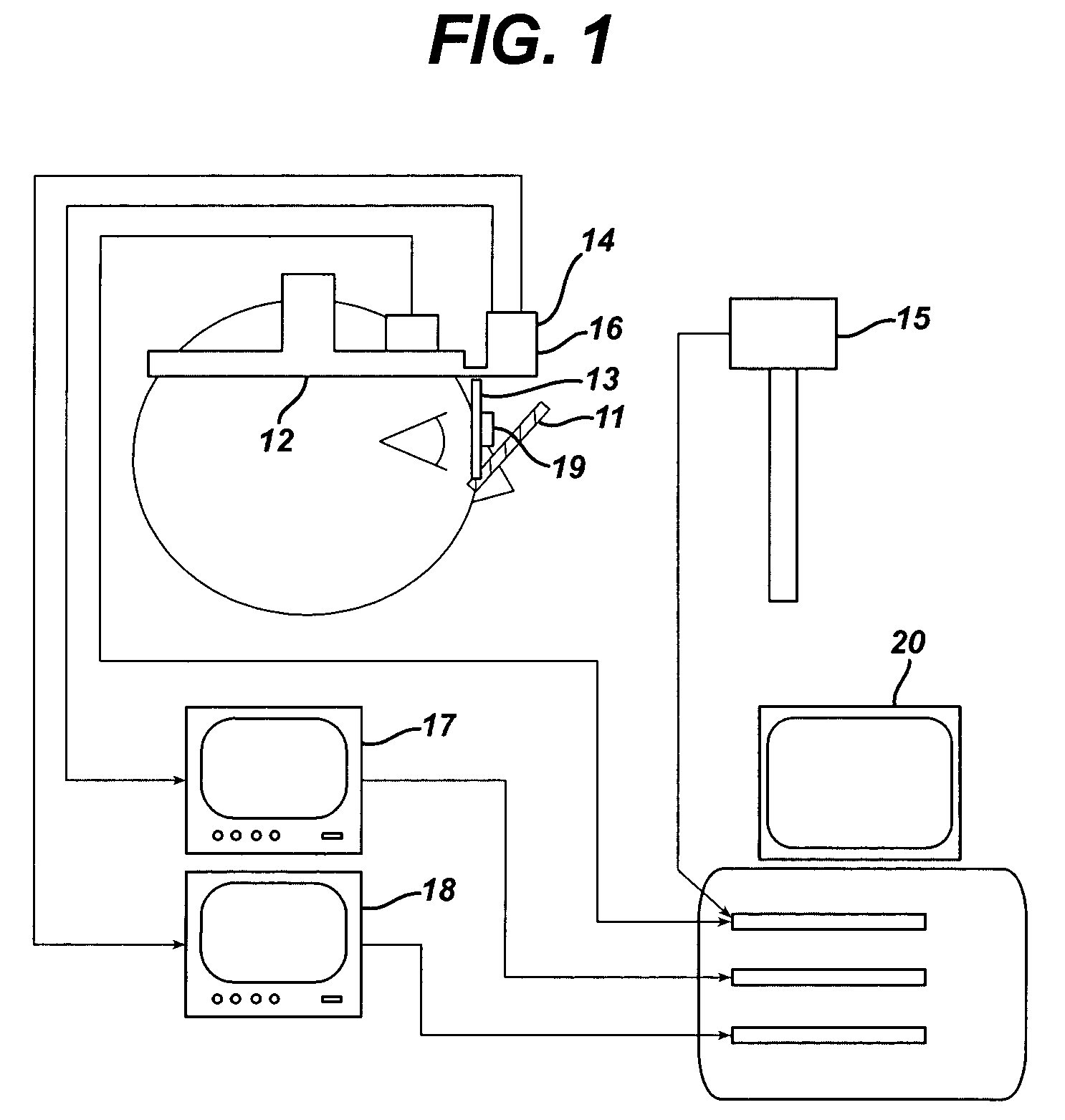Method for designing spectacle lenses taking into account an individual's head and eye movement
a design method and eye movement technology, applied in the field of eyeglass lens design, can solve the problems of lens wearer, non-relationship of patient feedback and objective testing to precise locations, and conventional design methods that do not account for these parameters with any precision
- Summary
- Abstract
- Description
- Claims
- Application Information
AI Technical Summary
Benefits of technology
Problems solved by technology
Method used
Image
Examples
example
[0029]For each of the subjects, two-dimensional recordings of point of regard, eye movements and head movements were compared for single vision and PAL lenses while subjects carried out three visual tasks. The lenses used were SOLA VIP™ and SILOR SUPER NO-LINE™ progressive addition lenses. The optical center of each of the lenses to be tested was determined and marked in the conventional manner at the fitting cross. A gel-filter (Kodak Wratten No. 87C) with five 0.6 mm apertures arranged as center, upper left, upper right, lower left and lower right was centered and attached to the front of the lenses that was on the left eye. The central aperture was positioned at the lens' fitting cross, or the point on the lens centered on the pupil. The filter blocked visible light and allowed infra-red light to be transmitted so that head and eye movements were recorded. The individual's other eye was occluded during calibration but not occluded during measurement.
[0030]The subject fixated on a...
PUM
 Login to View More
Login to View More Abstract
Description
Claims
Application Information
 Login to View More
Login to View More - R&D
- Intellectual Property
- Life Sciences
- Materials
- Tech Scout
- Unparalleled Data Quality
- Higher Quality Content
- 60% Fewer Hallucinations
Browse by: Latest US Patents, China's latest patents, Technical Efficacy Thesaurus, Application Domain, Technology Topic, Popular Technical Reports.
© 2025 PatSnap. All rights reserved.Legal|Privacy policy|Modern Slavery Act Transparency Statement|Sitemap|About US| Contact US: help@patsnap.com


